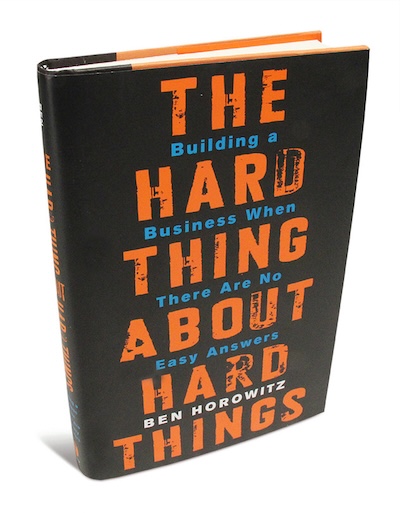Breakfast Smoothies
Book Read
February 1, 2025

Vacation Thoughts on The Hard Thing About Hard Things
I recently finished The Hard Thing About Hard Things by Ben Horowitz while sipping smoothies (okay, piña coladas) on a sunny beach in Cancun. Let me tell you—reading about layoffs, crisis management, and the emotional toll of leadership while surrounded by palm trees is a bit of a vibe clash. But somehow, it worked.
Horowitz doesn’t sugarcoat anything. This isn’t your typical feel-good business book with vague buzzwords and “manifest your success” nonsense. No, this is straight-up: “Running a business is brutal, and here’s how I survived it (barely).” It’s real, like a splash of cold water—perfect when you’re roasting in the sun.
Lessons That Still Hit Hard
One of the book’s strongest points is its raw honesty. Horowitz introduces the concept of The Struggle—that existential moment when everything is falling apart, and you have no idea what to do next (Horowitz, 2014). That part felt timeless. Whether you’re dealing with the chaos of hybrid work, battling market uncertainty, or just trying to get decent Wi-Fi at a beach resort (seriously, why is that still a problem?), his take on resilience and tough decision-making still applies.
His anecdotes are pure gold. Reading how a CEO scrambled to save his company while I was debating between fish tacos or nachos for lunch was almost poetic. It’s a reminder that, no matter how glamorous success looks from the outside, there’s always a grind behind the scenes.
Does It Hold Up in a Post-COVID World?
That said, The Hard Thing About Hard Things was published in 2014—before remote work, AI-driven decision-making, and the pandemic flipped the corporate world upside down (Harvard Business Review, 2021). Horowitz writes from the perspective of in-office leadership, navigating Silicon Valley’s tech booms, and pulling off massive IPOs. That’s a bit harder to relate to when today’s biggest challenges involve leading dispersed teams, retaining talent in an era of shifting priorities, and redefining workplace culture.
While his core principles—transparency, tough decision-making, and hiring the right people—still hold value, some of the book’s tactical advice feels somewhat outdated. For example, his emphasis on wartime leadership (the idea that companies must sometimes operate with a survivalist mindset) may not resonate in today’s world, where collaboration, adaptability, and employee well-being are just as critical to long-term success (McKinsey & Company, 2023).
A Bit Too Intense—But That’s the Appeal
Okay, not everything hit perfectly while lounging under a cabana. Horowitz’s tone can be a lot—at times, it feels like a business coach yelling at you during your siesta. He thrives on high-stakes scenarios, but the reality is that not every business operates in a make-or-break, life-or-death environment.
That said, that intensity is exactly what makes the book compelling. The brutal honesty, the raw leadership lessons, and the sense that no CEO has it all figured out—that’s why this book still resonates. It’s a wake-up call for anyone who thinks running a business is all strategy decks and investor meetings.
But let’s be real—Horowitz’s world is one of venture capital-backed, high-growth tech firms, where founders are making billion-dollar pivots. Some of his lessons might feel a little too intense.
Final Thoughts
Would I recommend this as a beach read? Weirdly, yes. It’s full of no-nonsense advice that can make you feel a little more prepared to tackle your own “hard things” when you’re back in the grind. Just take it with a grain of salt (or a rim of salt, depending on your drink). Not every business problem requires “lead bullets” (Horowitz’s metaphor for relentless effort over magical solutions)—sometimes, smart strategy and good people can get you there.
So, grab a drink, soak up some sun, and let Horowitz’s tough-love lessons sink in. Just don’t let it ruin your vacation.
Sources
- Horowitz, B. (2014). The Hard Thing About Hard Things: Building a Business When There Are No Easy Answers. Harper Business.
- Harvard Business Review (2021). The Pandemic Changed Work Forever. Here’s How to Make It Work for You.
- McKinsey & Company (2023). The State of Organizations 2023: Ten Shifts Transforming Companies.